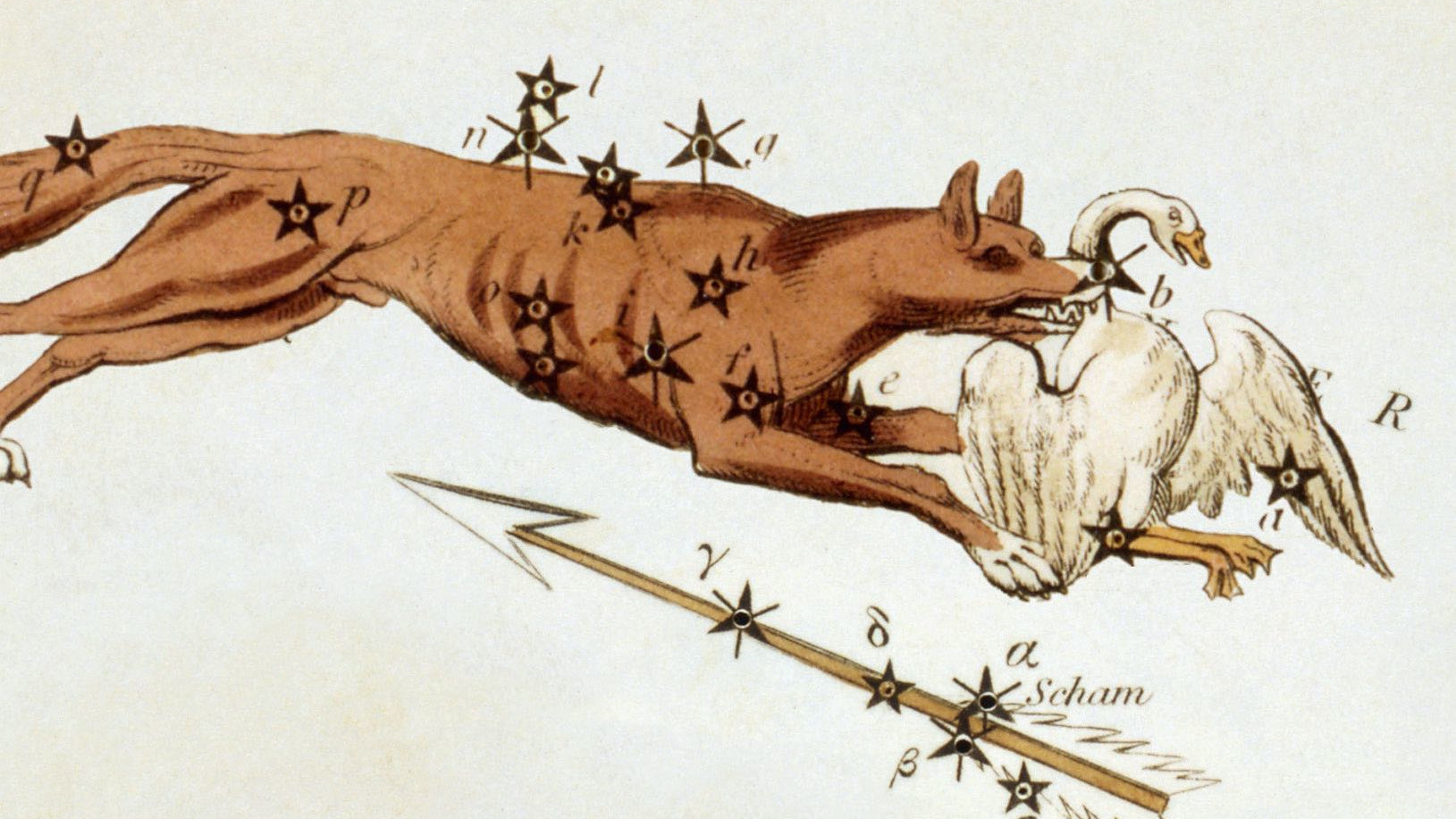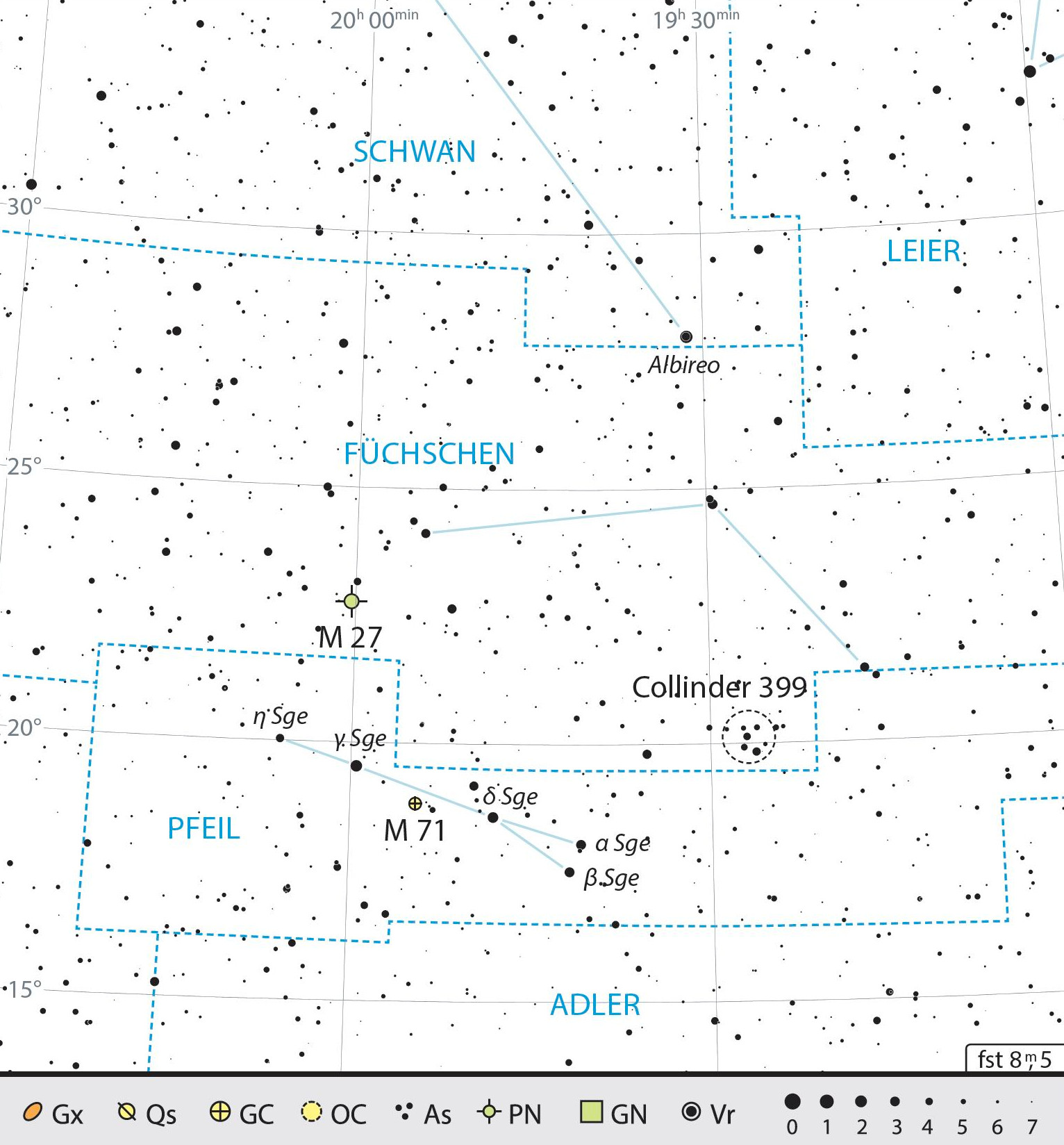Vulpecula and Sagitta
Two small constellations, three great objects: planetary nebula M27, globular cluster M71 and the Coathanger Cr 399.
 Half-way between Cygnus and Aquila is the Sagitta and Vulpecula pair of constellations; the latter is depicted on historical star charts with a goose.
Half-way between Cygnus and Aquila is the Sagitta and Vulpecula pair of constellations; the latter is depicted on historical star charts with a goose.The Summer Triangle, comprising Cygnus, Lyra and Aquila, is also home to two lesser-known constellations. But Vulpecula and Sagitta are always worth a visit, especially for deep sky observers. Sagitta is the more striking constellation of the two. According to legend, it was claimed to be the arrow with which the god Apollo killed the Cyclopes. Most often, however, lonely Sagitta is associated with its neighbouring constellation of Hercules. The most famous hero of Greek mythology is said to have killed the eagle Aquila, which ate daily from the liver of the titan Prometheus who had been chained as punishment.
Open cluster or globular cluster?
Sagitta is the third smallest of all 88 constellations. It is immediately clear, however, why all cultures saw the image of an arrow in its elongated form: The brightest star of the constellation γ Sge forms the arrowhead, the long shaft continues to δ Sge, and the pair α and β Sge mark the fletching.
M71 is located approximately halfway between γ and δ Sge. Due to its appearance, for a long time it was unclear whether the object was a dense open cluster or a loose globular cluster. It has since become clear that it is, in fact, the latter. The ancient luminaire – M71 is around twelve billion years old – can be observed with binoculars.
 Outline map of the constellations of Sagitta and Vulpecula, with our observing recommendations. J. Scholten
Outline map of the constellations of Sagitta and Vulpecula, with our observing recommendations. J. ScholtenThe fox and the goose
The Latin word Vulpecula literally means little fox, or just fox. It is an inconspicuous constellation, which first appeared in Johannes Hevelius’ sky atlas in around 1690. If you look at historical star charts, the fable about the fox and the goose comes to mind. Today, only the name for α Vul – Anser, meaning goose – reminds us of the predator’s prey.
Inconspicuous Vulpecula is usually only known for two deep sky objects: M27 is the brightest planetary nebula in the Messier catalogue and is also visible with binoculars. The motto here is: the greater the aperture, the more detail the ball-shaped nebula will reveal. The second object is even visible with the naked eye. In spite of its brightness, it was only officially named by the Swede Per Collinder in 1931: Collinder 399. In binoculars the geometric form becomes clear, this group of stars is known as the Coathanger. It is not a real cluster, but only a star pattern (asterism).
Author: Nico Schmidt / Licence: Oculum-Verlag GmbH
